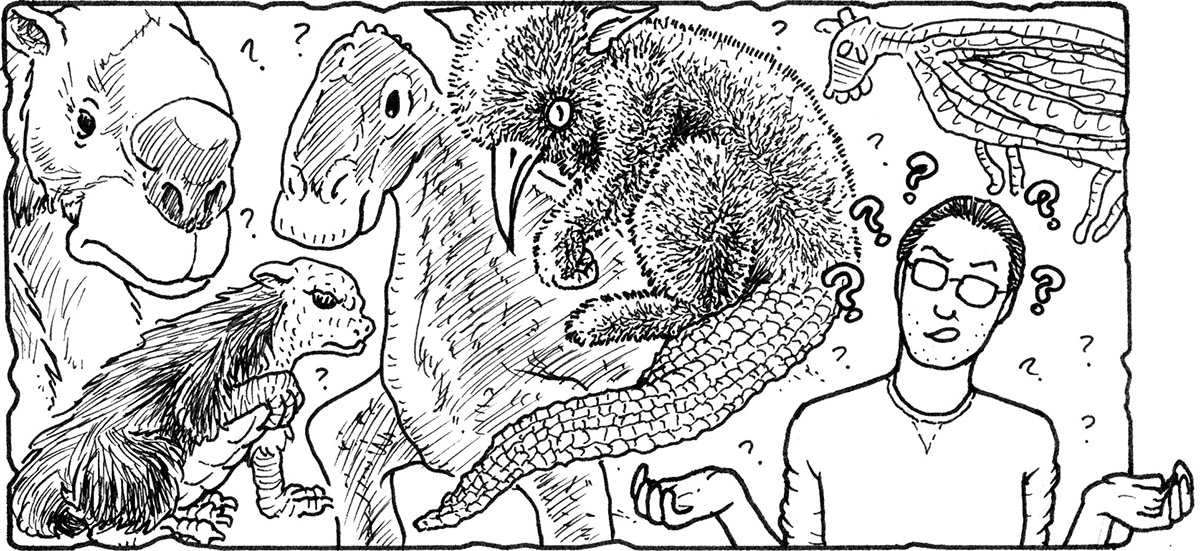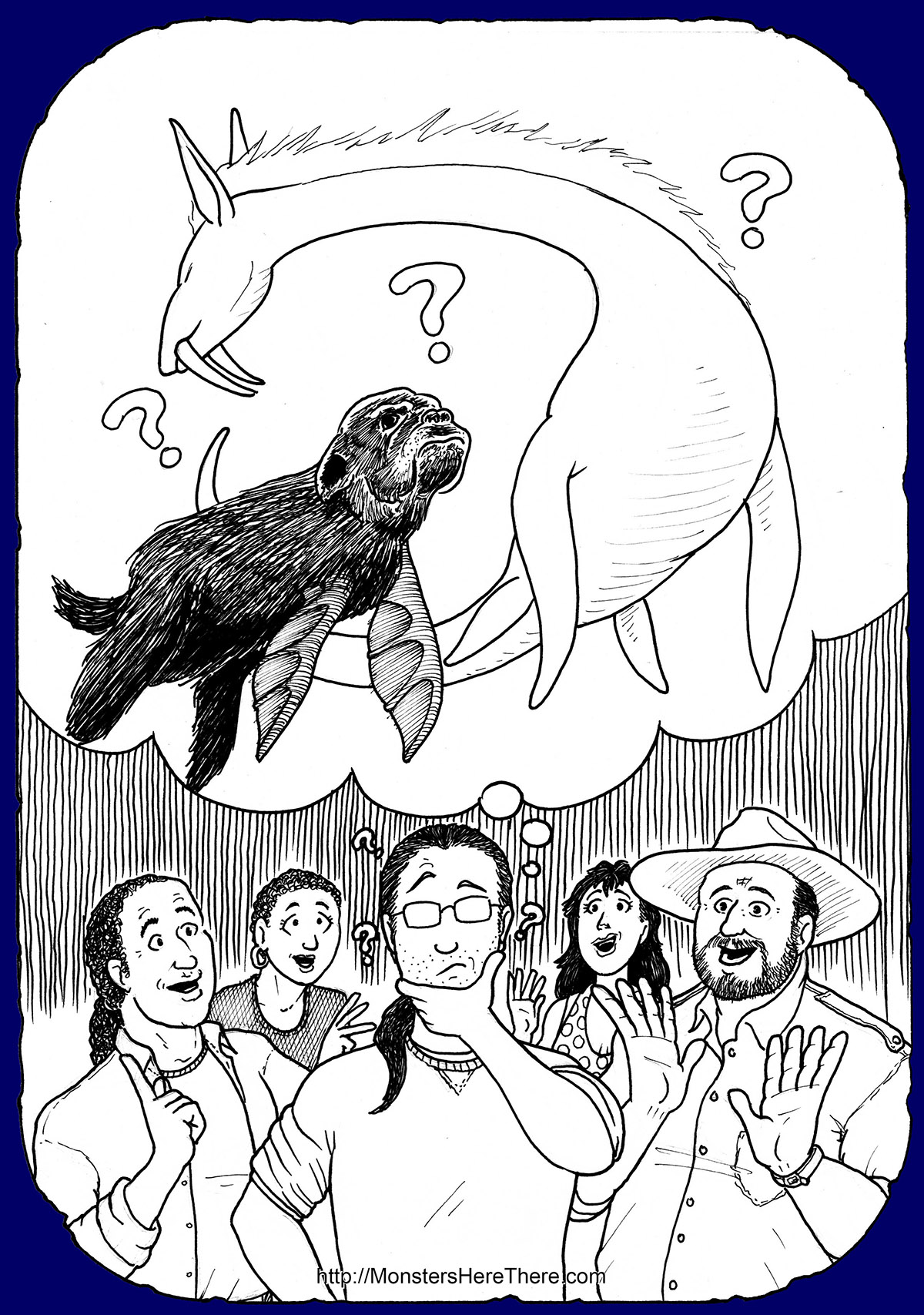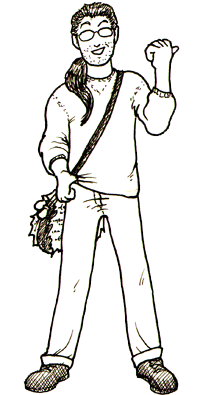Area(s) Reported: Australia
Date(s) Reported: Timeless
Long before European settlers came to Australia, the native Aboriginal Australians told tales of a large amphibious man-eating beast called the “bunyip.” Though many different native groups across the continent professed their beliefs in the existence of this beast, their stories presented varying descriptions of what the creature looked like... perhaps because almost everyone who had likely encountered a bunyip had been eaten by it. Bunyips were described by the Aboriginal Australians as strangely magical creatures said to exist in what the natives' called the "Dreamtime," a sort of second world existing within and/or alongside our normal world wherein the rules of existence are very different. This 'Dreamtime' world could connect in odd and unexpected ways with the normal world... such as allowing encounters with semi-spiritual beasts like Bunyips. Now, unfortunately, most of what I can gather about the earliest Aboriginal Australian stories and legends of the bunyip are in books published by the Europeans who started to live in Australia in the early 1600's (and were the majority population of the continent by the early 1800's). As I will explain later, the European Australians had very different ideas about what a 'bunyip' was, which colored what was being recorded of the Aboriginal Australians' beliefs; but we can still gather some important insights from these texts. As I already mention, bunyips were attributed differing descriptions; but they were also attributed to have magical traits. One tale tells of a tribe that captured a bunyip's child; the mother bunyip then flooded a valley just so it could reach their village at the top of a hill, and then the beast transformed all of the villagers into black swans before recovering her child. Other stories of bunyips make clear that they were believed to be intelligent enough to lay traps to attract people to them for easy prey, and that this may have included an ability to control the amount of eels and fish that could be found in the waterholes they occupied. More practical information explained that bunyips most often inhabited lagoons, water holes, and billabongs (watery pools left when rivers run dry)... they were not found in running waters, like rivers or creeks. The only evidence that a bunyip might be in an area was either a straight-up bunyip attack, or the presence of strange noises and bloodcurdling cries that could sometimes be heard coming from these watery habitats. Aboriginal Australians would avoid areas where these sounds came from, on the assumption that a bunyip had caught a victim to eat. The bunyip might have remained a curious creature in Aboriginal Australian stories except that the Europeans who later moved into the country believed that the stories of bunyips must have been based on actual animals... so they started to look for them. Physical Evidence? One of the first Europeans to claim to see a bunyip was William Buckley, an escaped convict that lived with the Aboriginal Australians from 1803 to 1835. All he ever saw of the creatures, he claimed, were their backs in waterways, which he described as “covered with feathers of a dusky-grey colour.” Buckley estimated that all of the different bunyips he saw were about the size of a full-grown calf. He claimed that when alone he had made several attempts to spear one; but he knew his native friends would likely kill him if they found out he’d tried. Buckley's claimed encounters were published seventeen years after they encounters would have happened, when he needed money... so there is much doubt regarding the trustworthiness of his claims. In 1847, a strange skull was found on the banks of the Murrumbidgee River in New South Wales; and Aborigines identified it as a bunyip skull. At first it was believed to belong to an unknown species of animal, so it was put on display in the Australian Museum for two days as a “bunyip skull”... but it was soon determined that the skull was actually that of a deformed foal, and, therefore, not evidence of an unknown species. By then, however, the stories of 'bunyips' had caught the attention of the Australian public. For the rest of the 19th century, many people wrote to Australian newspapers claiming to have seen a bunyip... and the descriptions given were almost always different. The problem was that with no set description of the bunyip to begin with, any strange thing seen in or near water was being labeled as a “bunyip.” 
From the various reports that appeared over time, however, two particular descriptions were repeated more than any others; and many people now believe that these two “bunyips” are actually unknown animals. One is described as a black shaggy beast with a bulldog-like head. The other is described as hairy, the size of a calf, with a long neck with a mane of hair running down it, a pointed head, and two long ears that prick up when surprised. Some people feel these “bunyip” reports are simply confused sightings of emus, kangaroos, and crocodiles (among other creatures). Another theory is that people are seeing an unknown type of black shaggy seal that occasionally swims far inland, sometimes getting trapped in land-locked ponds and billabongs as waterways dry up. So, despite the lack of physical evidence, the bunyip has become a well-known monster. Modernly, the bunyip has become sort of a national symbol of Australia, and commonly appears as a character in movies, TV shows, books, and other media... and every one of these 'bunyips' looks different. Strange noises in waterways are still associated with bunyips, though the creatures are now considered more of a tall tale; and mothers have been known to use stories of a child-eating bunyip to scare little ones away from playing in the wilds. It’s not surprising that the Australian phrase “why chase the bunyip?” has become a proverb meaning “why pursue an impossible task?” 
| 








